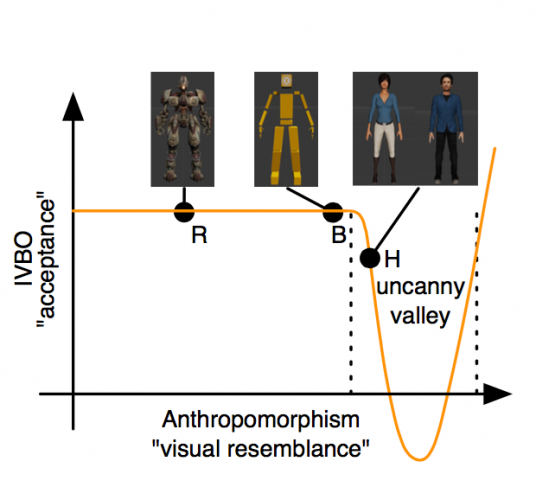 Johanna Latt was at IEEE VR talking about the impact of avatar anthropomorphism on the Virtual Body Ownership Illusion effect. She found that there was some uncanny effects when the avatar looked more like a human than a more stylized robot or block humanoid.
Johanna Latt was at IEEE VR talking about the impact of avatar anthropomorphism on the Virtual Body Ownership Illusion effect. She found that there was some uncanny effects when the avatar looked more like a human than a more stylized robot or block humanoid.
Listen:
She talks about some of the bottom-up and top-down variables for the Virtual Body Ownership Illusion effect, and some of the techniques that are used in order to help induce the effect. The research literature indicates that the biggest factor for inducing the virtual body ownership illusion is to one-to-one limb tracking. One way to test whether or not the subject is identifying with the virtual avatar is to introduce a threat within the virtual environment. If the subject reacts to a threat, then it’s a good indicator that they’ve identified the virtual avatar as their own body.

She talks about some of her conclusions from her research, and some of the future research questions about how virtual embodiment can have long-term effects on identity and behavior.
Become a Patron! Support The Voices of VR Podcast Patreon
Theme music: “Fatality” by Tigoolio







